David Hockney: Salts Mill hosts artist's new 295ft-long artwork
- Published
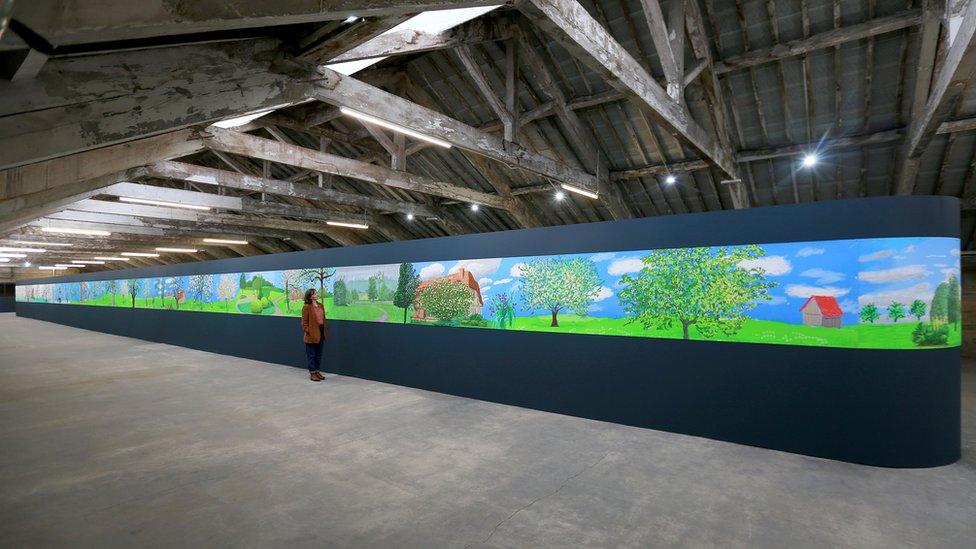
Hockney painted the pictures on his iPad during lockdown in 2020, and they were later printed onto paper
A new 295ft (90m)-long artwork by David Hockney depicting the changing seasons of his French garden in lockdown is to go on display in the city of his birth.
A Year in Normandie was made by joining some of the 220 paintings Hockney created on his iPad, printed onto paper and shown in a continuous length.
What is the 84-year-old's largest work has been pinned to a wall in the vast attic space of Salts Mill in Bradford.
It is the first time the work has been seen in the UK.
It was previously on display at the Musée de l'Orangerie in Paris.
In April 2020, not long after the start of the pandemic, Hockney shared some of the paintings he had created with the BBC, along with his thoughts on the role of art in life.

Hockney painted every day at his house in Normandy at the start of the 2020 lockdown
At the time, he said: "I began drawing the winter trees on a new iPad. Then this virus started.
"I went on drawing the winter trees that eventually burst into blossom. This is the stage we are right now.
"Meanwhile, the virus is going mad, and many people said my drawings were a great respite from what was going on."
The artist, who was born in Bradford, traces A Year in Normandie's inception back to when he first saw a Chinese scroll painting at the Metropolitan Museum of Art in New York in 1983.
He said seeing that painting, which was about 98ft (30m) long and was displayed for him in a private room, was "one of the most exciting days of my life".
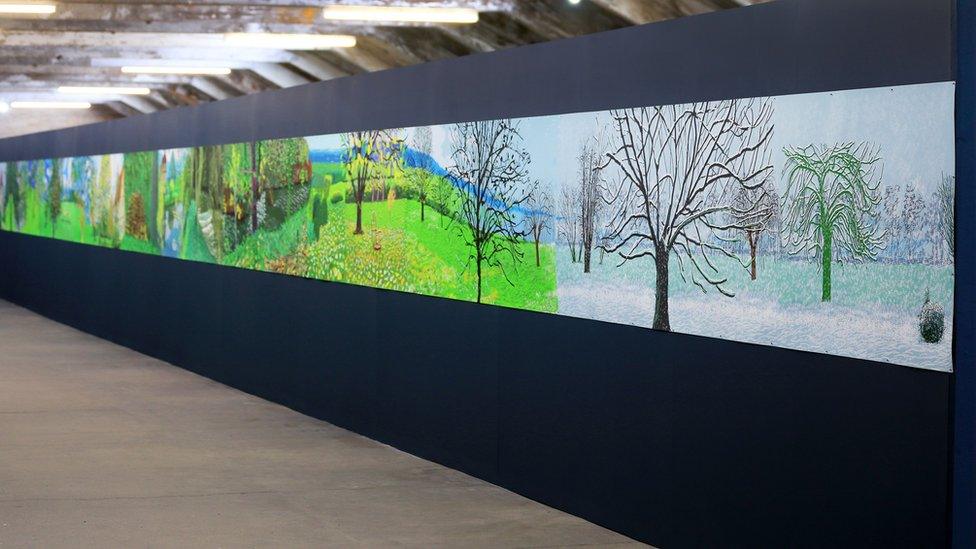
The artist took inspiration from the Bayeux Tapestry and a Chinese scroll painting
Hockney said he was also inspired by the Bayeux Tapestry, a 230ft (70m)-long embroidery showing the events leading up to the Norman Conquest of England in 1066.
He said: "The viewer will walk past it like the Bayeux Tapestry, and I hope they will experience in one picture the year in Normandy."
In an adjoining room at the former textile mill in Saltaire, Bradford, visitors can see Hockney's video piece called Remember You Cannot Look at the Sun or Death for Very Long, 26th April 2020.
A Year in Normandie will be open to the public at Salts Mill from Wednesday 4 May.
Salts Mill, built by Sir Titus Salt in 1853, was once the largest factory in the world, housing 3,000 workers at 1,200 looms, producing 30,000 yards of cloth each day.
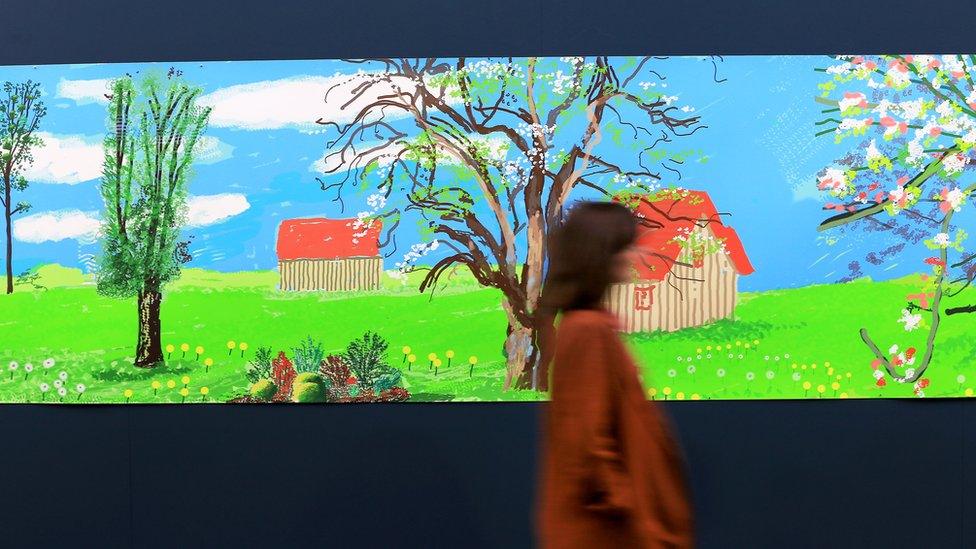
The work has been pinned to a specially-built wall in the attic space of Salts Mill

Follow BBC Yorkshire on Facebook, external, Twitter, external and Instagram, external. Send your story ideas to yorkslincs.news@bbc.co.uk, external.
Related topics
- Published1 April 2020

- Published22 November 2016
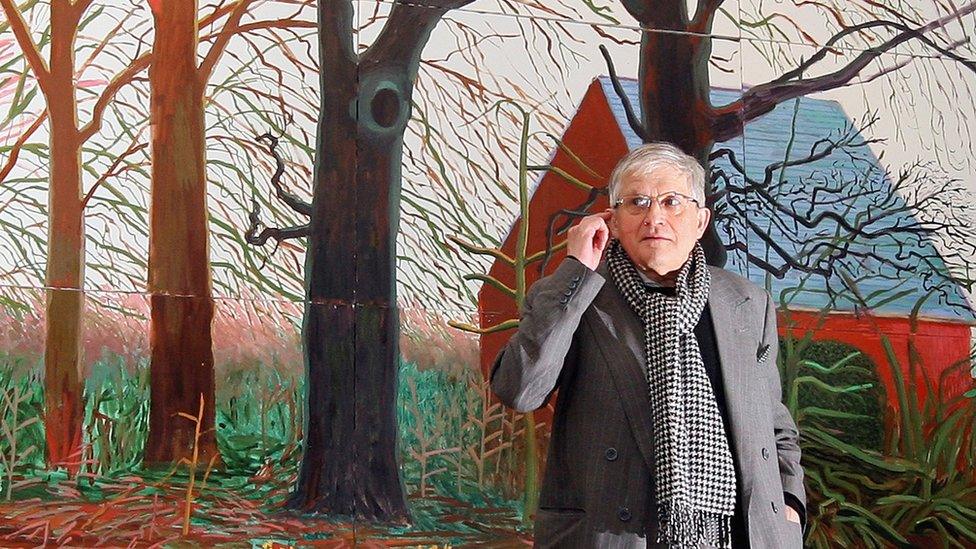
- Published18 November 2016
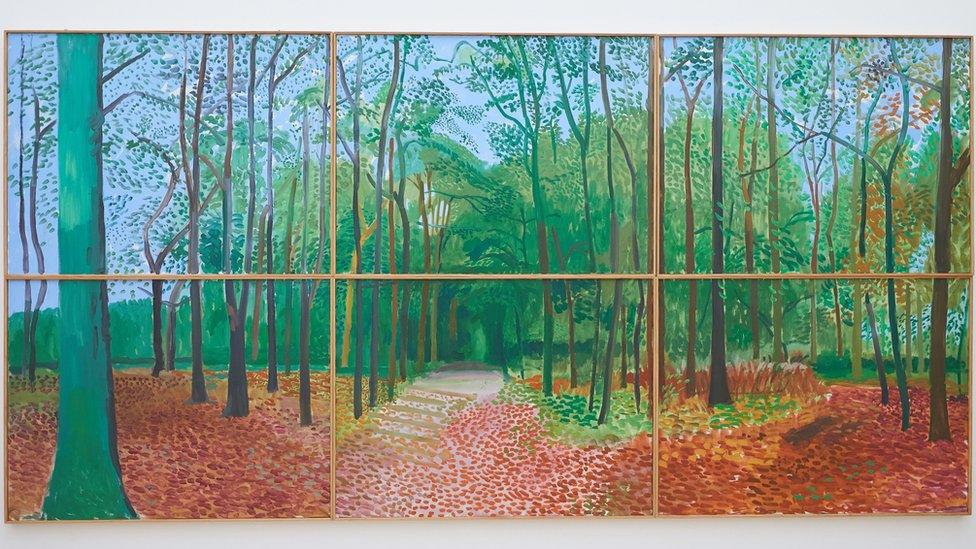
- Published28 June 2016
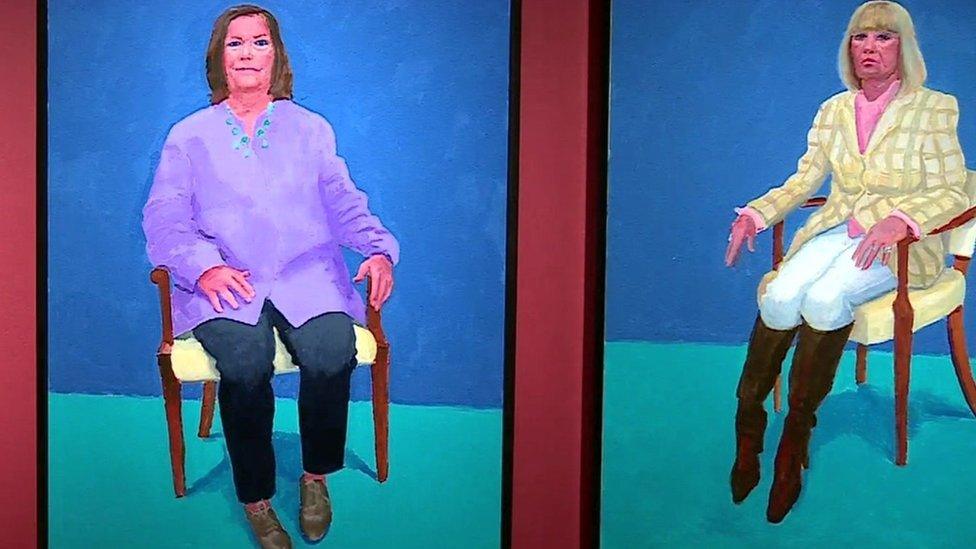
- Published29 November 2013

- Published30 August 2013
